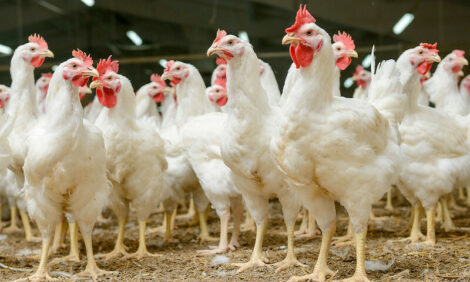



Take steps to stop avian influenza in wild birds, domestic flocks - extension
University of Illinois extension specialists offer adviceAvian influenza cases are on the rise in the US. From cancelled poultry shows to advising homeowners to remove bird feeders, University of Illinois extension specialists are urging those who come into contact with birds to take steps to prevent the disease from spreading.
Highly pathogenic avian influenza is a contagious virus that spreads among wild geese, ducks, and other waterbirds species, as well as some raptors, including bald eagles. Wild birds, which may show no symptoms even if infected, can carry the disease to new areas as they migrate north and transmit it to domestic poultry, according to the US Department of Agriculture’s Animal and Plant Health Inspection Service (USDA-APHIS).
Avian influenza is an extremely infectious respiratory disease that affects all domestic poultry, including laying hens, broilers, and turkeys, as well as waterfowl and game birds. It can spread quickly within flocks causing severe disease and death.
In the last outbreak of avian influenza, more than 200 commercial flocks and 21 backyard flocks in the US were affected, leading to the deaths of more than 50 million birds between 2014 and 2015.
Illinois became one of 33 states with confirmed avian influenza cases in wild birds. More cases have been found in Champaign, Fulton, Sangamon, Will, and Cook counties.
The Centers for Disease Control (CDC) is monitoring the recent outbreak and says it is not an immediate public health concern, although Reuters reported the first case of avian influenza in humans in the US just today.
On April 21, the Illinois Department of Natural Resources recommended removing bird feeders and birdbaths until the end of May to discourage large gatherings of birds and interactions between waterfowl and songbirds. Hummingbird and oriole feeders do not need to be removed. Any remaining birdseed should also be removed, and bird feeders and baths should be cleaned with a diluted bleach solution that is nine parts water and one part bleach.
Joy O'Keefe, assistant professor and extension wildlife specialist in the Department of Natural Resources & Environmental Sciences, says removing bird feeders is a precaution that can protect wild and domesticated birds.
“Passerines, or songbirds, that come to bird feeders are not likely to be affected,” O’Keefe says. “In the absence of feeders, birds should be able to find natural sources of food from sprouting native plants and emerging insects.” She added that property owners can plant native shrubs and wildflowers this spring as natural food sources for birds.
Removing feeders is especially important for people who take care of poultry because, while avian influenza has not been found in songbirds, feeders can attract wild waterfowl. Flock owners should prevent contact between their backyard flocks and wild birds.
The disease has been detected in commercial and small flock poultry and gamebird operations in 29 states. In April, two cases of avian influenza were found in small backyard flocks in McLean and Carroll counties, affecting 80 birds. No commercial producers have been affected in Illinois. The Illinois Department of Agriculture announced an emergency order on April 5 cancelling poultry-related events such as sales or exhibits.
Illinois is home to about 9 million commercially produced poultry, mostly laying chickens and turkeys. The number of backyard birds that people keep for egg production is estimated to be 30,000 birds. Small flocks may have a higher risk of contracting avian influenza, says Kenneth Koelkebeck, professor and Extension poultry specialist in the Animal Sciences Department.
“Those backyard flocks are mostly outside and waterfowl may be around,” Koelkebeck says, “whereas commercial poultry are kept in enclosed buildings.”
Poultry producers should follow biosecurity measures to reduce the possibility of their birds contracting avian influenza. Protocols, such as keeping free-range birds inside and wearing protective boot covers when entering a chicken coop, reduce the risk of spreading bacteria or viral pathogens. The USDA has biosafety recommendations for backyard flocks available at bit.ly/3L9s1Rb.
“Poultry owners should keep things as clean as they can,” Koelkebeck says. “Remove standing water if possible because it will attract migratory waterfowl.”
Visible symptoms of avian influenza include runny eyes, swelling, and lethargy. When the disease is detected in domestic poultry, the IDOA quarantines the site; flocks are depopulated to prevent the disease from spreading and remove them from the food system. Other area flocks are monitored for the disease.









